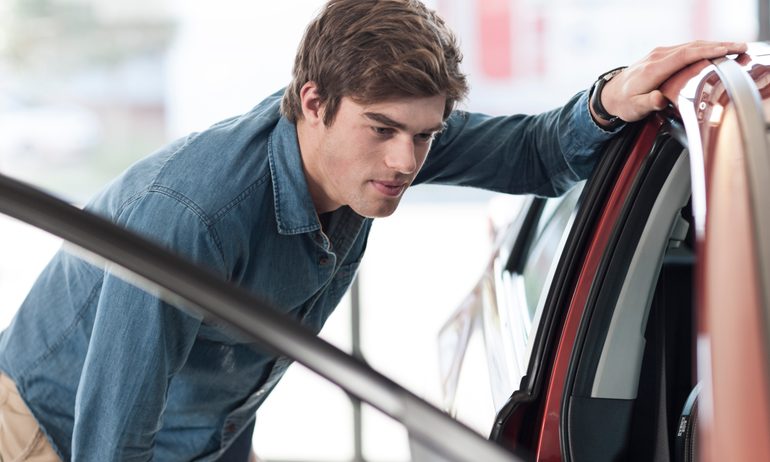Why It Will Be Hard to Replace Cars Destroyed by Hurricane Ian
Based on early estimates, more than 300,000 car owners in the storm's path could need replacement vehicles.

Many, or all, of the products featured on this page are from our advertising partners who compensate us when you take certain actions on our website or click to take an action on their website. However, this does not influence our evaluations. Our opinions are our own. Here is a list of our partners and here's how we make money.
Final numbers won’t be available for months, but one thing is certain: An overwhelming number of drivers in Hurricane Ian's path will be replacing a vehicle at a time when inventories are already tight.
"We’re anticipating more than 300,000 destroyed vehicles from Hurricane Ian,” says Mark Friedlander, Florida-based director of corporate communications for the Insurance Information Institute, citing early damage reports from Florida, North Carolina and South Carolina.
Ian crashed ashore to flood, smash and carry away countless vehicles. While picking up other pieces of their lives, hurricane victims are left trying to find rental cars, filing auto insurance claims (if they had comprehensive coverage) and starting the search for replacement vehicles.
Friedlander says based on estimates, Ian could be the second-largest vehicle loss event on record in the U.S. That would place it behind only Hurricane Harvey in 2017, when 500,000 vehicles were destroyed.
How will Ian’s destruction affect the national car market?
The national car market has been in chaos for more than a year. Supplies of new and used vehicles have been limited, due to pandemic-driven supply-chain issues and semiconductor chip shortages. With car manufacturers unable to meet the demand for new vehicles, car buyers depleted used-car inventories. This shortage pushed car prices, as well as car payments, to record highs.
In September, it appeared that vehicle inventories were stabilizing. Cox Automotive, an automotive marketplace and data company, reported that used-car supply was returning to normal and used-car prices were starting to drop. The inventory of new cars, while still below pre-pandemic levels, had improved and closed August at its highest level since June 2021.
Then came Ian.
Auto dealerships in Florida are working to meet the increased demand, with some car manufacturers committing to send more new vehicles than normal to affected areas. Many dealerships are also advertising $1,000 or more in discounts for those replacing vehicles damaged by the storm, as well as delayed first car payments.
In an Oct. 11 news release, Cox Automotive predicted new vehicle inventories will remain tight, so about 80% of Ian replacement vehicles will be used. The good news, from a market perspective, is that most of this activity is expected to occur within a few months and “will not noticeably impact national used-vehicle retail sales.”
Explore the auto-buying platforms from our partners below.
AD
Finding the elusive replacement vehicle
Photos of hurricane victims with their recently purchased cars are starting to appear across social media, and most also mention the difficulty of finding a vehicle and paying a high price. As more people settle insurance claims, demand will likely increase further.
Matt Degen, senior editor at Kelley Blue Book, says buying a car outside of storm-damaged areas is one option, with most dealer inventories available online. “They can buy a car from out of state and have it shipped. Usually the dealership will work with buyers on registration and making sure everything is compatible with their state, so that's usually not an issue.”
Online car retailers are also preparing to meet potentially increased demand for vehicles in areas affected by Ian. Nicole Rappaport, spokesperson for CarMax — the largest used-car retailer in the U.S. — said in an email, “Our network includes more than 40,000 vehicles of nearly every make and model that customers in these impacted regions have access to and can have them delivered or transferred to their nearest location.”
Online car-buying apps are another way to spread a wider net when searching for a replacement vehicle.
For those who want a new vehicle and don't mind waiting, ordering a built-to-order vehicle from the factory could be a solution. It may also be a way to avoid dealer markups.
Precautions to take when replacing a car after a natural disaster
If you're a car owner replacing a vehicle after a hurricane or other disaster, you should take several steps to protect yourself.
You’re not covered for storm damage unless you carry comprehensive auto insurance, which compensates you for the value of your vehicle at the time of its loss, minus any deductible.
With car values skyrocketing in the past year, what your car is worth might surprise you. You can research the car’s true market value using pricing guides like Kelley Blue Book or Edmunds, and dispute an insurance company’s offer if it seems low. Looking up the true market value is also important when buying a car, so you know that you aren’t overpaying.
Finally, beware of flooded vehicles that have found their way back into the market. Degen says unscrupulous sellers trying to unload formerly flooded vehicles is always a problem after disasters like Ian. While these cars should have flood or salvage titles, that isn’t always the case.
Degen recommends getting an AutoCheck or Carfax vehicle history report, which usually shows any flood title issued. Again, be sure to consult pricing guides to check the car’s fair purchase price. If a seller is asking much less, that should raise suspicions.
Getting a pre-purchase inspection by your chosen mechanic is another safeguard. Says Degen, “It might cost you a few hundred dollars, but it could save you a lot in the long run."




